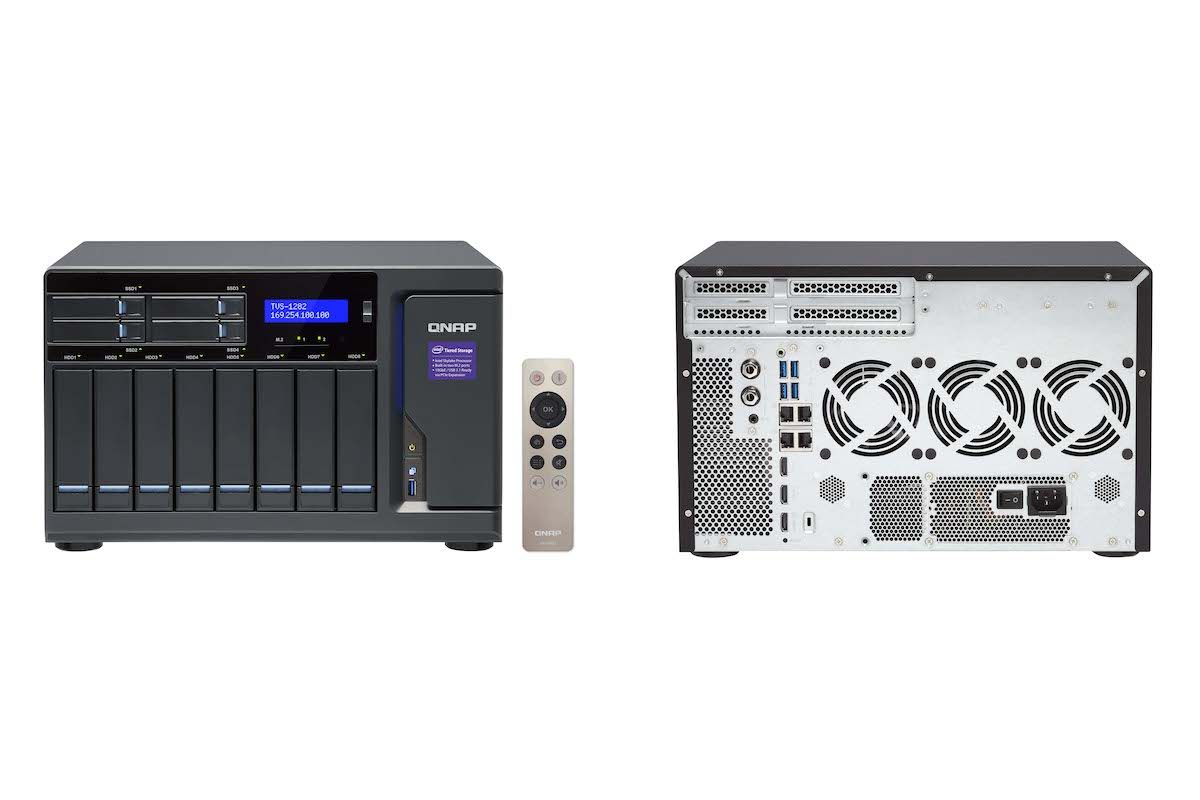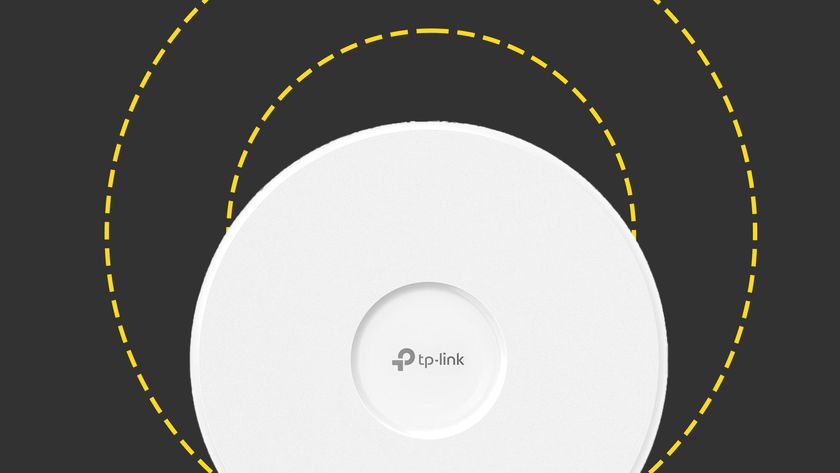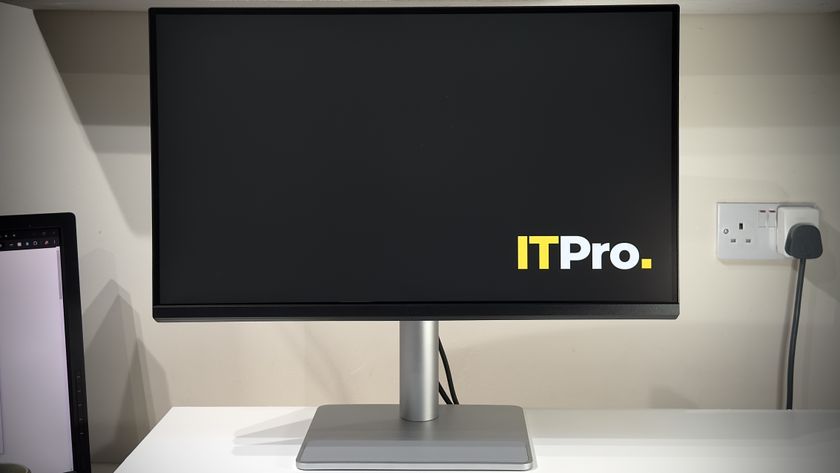The desktop and Control Panel get a refresh while the new resource monitor offers a wealth of graphs and tables on hardware and storage utilisation. The new Qfiling app keeps your files in order as it can search for them using a wide range of criteria and copy or archive them to a different location.
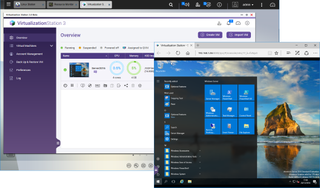
We used the revamped Virtualisation Station to test Windows Server 2016
Impressive performance
To test performance, we used a Lenovo System x3550 M5 rack server running Windows Server 2012 R2 and equipped with an Emulex 10GBase-T adapter. Running Iometer on a share mapped over 10GbE, it reported fast raw read and write speeds of 9.2Gbits/sec and 8.4Gbits/sec.
Our real-world tests proved undemanding with copies of a 25GB test file returning read and write speeds of 4.6Gbits/sec and 3.7Gbits/sec. Backup operations are also fast as we secured a 22.4GB test folder with 10,500 small files to a share at 2.3Gbits/sec.
IP SAN performance is nothing to sniff at either with Iometer reporting raw read and write speeds of 9Gbits/sec and 9.2Gbits/sec for a 500GB target. We created a dual 10GbE MPIO link to the target and saw Iometer read and write speeds ramp up to 17.5Gbits/sec and 16.2Gbits/sec.
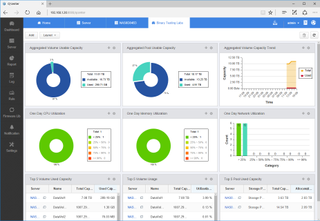
The Q'centre app can be run locally or virtualised and provides a central console for managing all your Qnap appliances
Data protection
The main Storage Manager app is used to create snapshots for NAS shares and iSCSI LUNs and we could schedule them for as often as every five minutes. The Snapshot Manager gets a refresh in QTS 4.3 with the Timeline view making it even easier to locate snapshots and recover from them.
To restore data, we selected a snapshot and could recover it all using the Revert option, download selected folders or mount snapshots as shares and browse their files. Smart snapshots save storage space as the appliance only takes the next snapshot if the data has changed since the last one.
All local, remote, Rsync, and iSCSI LUN backups are managed by the Hybrid Backup Sync app. Load the Cloud Backup Sync feature and it adds facilities for managing backups to providers such as Amazon, Azure and Google Cloud Storage.
The app also handles off-site backup using RTRR (real-time remote replication) which runs one-way or two-way syncs between folders on local and remote Qnap NAS appliances. The Qsync Central app looks after Windows and Mac client backup by providing real-time, two-way folder syncing.
Conclusion
Apart from the size restrictions on the two outer PCI-Express slots, there's little else to criticise the TVS-1282 for. It combines a wealth of storage permutations in a well-built chassis with a powerful and versatile hardware package.
Qnap's data protection features make it a great backup repository and its virtualisation apps are unbeatable. It delivers top NAS and IP SAN performance while the new QTS 4.3 software will make a great NAS appliance even better.
Verdict
Businesses that want a NAS for all seasons will find the versatile and powerful TVS-1282 a great choice
Chassis: Desktop CPU: 3.4GHz Intel Core i7-6700 Memory: 64GB DDR4 ECC Storage: 8 x LFF, 4 x SFF hot-swap SATA drive bays; 2 x M.2 SSD slots Array support: RAID0, 1, 10, 5, 6, hot-spare, JBOD Network: 4 x Gigabit Other ports: 5 x USB 3, 3 x HDMI, 3.5mm audio out, 2 x 6.3mm audio in Expansion: 3 x PCI-e 3 slots Management: Web browser
Dave is an IT consultant and freelance journalist specialising in hands-on reviews of computer networking products covering all market sectors from small businesses to enterprises. Founder of Binary Testing Ltd – the UK’s premier independent network testing laboratory - Dave has over 45 years of experience in the IT industry.
Dave has produced many thousands of in-depth business networking product reviews from his lab which have been reproduced globally. Writing for ITPro and its sister title, PC Pro, he covers all areas of business IT infrastructure, including servers, storage, network security, data protection, cloud, infrastructure and services.
